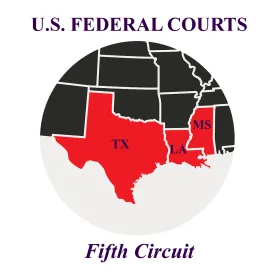Are courts making it impossible to guarantee trade secrets will not be disclosed upon filing of litigation? In a recent case, Binh Hoa Le v. Exeter Fin. Corp., the U.S. Court of Appeals for the Fifth Circuit (covering Louisiana, Mississippi, and Texas) ruled that courts should take a more studied approach to allowing sealed records in trade secret proceedings, and a number of courts throughout the United States have quickly agreed. In fact, several district courts have already demanded litigants provide more explanation and legal authority before entering an order to seal documents that are filed. In late April, one federal court in Louisiana went so far as to opine that “the parties are warned that trial exhibits and trial testimony will be available to the public and will not be sealed even by consent of the parties.”
Herein lies the dilemma: An employer seeking to protect its trade secrets by filing a lawsuit must be careful that such litigation does not lead to the disclosure of such trade secrets to the public at large. Is such protection automatic in light of recent rulings?
In the Binh Hoa Le case, the Fifth Circuit reminded us that even when all parties agree to seal records, such agreement is not enough to get the records sealed away from the public’s view. In what it referred to as a peripheral-yet-essential point (and expounding upon the history of public access that traces “back to Roman law”), the Fifth Circuit devoted a large part of its opinion to admonishing district courts to be “ungenerous with their discretion to seal judicial records” because “[j]udicial records are public records. And public records, by definition, presume public access.”
The district court had granted an agreed protective order, authorizing the sealing, in perpetuity, of any documents that the parties themselves labeled confidential. On appeal from an unrelated ruling, the Fifth Circuit strongly disfavored the sealed record—nearly 75% of the record (3,202 of 4,391 pages) was hidden from public view, “for no discernable reason other than both parties wanted it that way.”
The Fifth Circuit then explained there are two distinct standards that are commonly and erroneously conflated:
The first standard, requiring only “good cause,” applies to protective orders that protect the confidentiality of documents produced at the discovery stage, to facilitate the parties’ efficient exchange of information between themselves. Standard confidentiality or protective orders are commonplace in employment litigation, and especially trade secret litigation. As explained below, however, parties in trade secret litigation may need to make some adjustments to the standard order at the outset so that trade secrets will remain adequately protected later in the litigation.
The second standard, a stricter (or “far more arduous”) balancing test, applies at the filing stage. Once a document is filed, it becomes a judicial record, and the Fifth Circuit warned that judges must undertake a “case-by-case, document-by-document, line-by-line balancing” of the public’s common law right of access against the interests favoring nondisclosure. The court even warned courts that they abuse their discretion if they make no mention of the presumption in favor of the public’s access to judicial records and fail to articulate any reasons that would support sealing.
Why does this matter? Because once a party files a document as an exhibit to a dispositive motion, that document becomes a judicial record and is, as a general rule, accessible to the public at large. The only way to seal that document away from the public’s eyes is to show a compelling interest (not just good cause) for doing so. Parties must not assume that whatever satisfies the lenient protective-order standard will necessarily satisfy the stringent sealing-order standard.
Can Trade Secrets Still Be Filed Under Seal in the Fifth Circuit Post-Binh Hoa Le? Yes
An employer in the Fifth Circuit’s coverage area seeking to protect its trade secrets by filing a lawsuit against a former employee or his/her new employer must be careful that its protective order covers the discovery stage, dispositive motions, and the trial stage of litigation. And don’t conflate the standards set forth in Binh Hoa Le. Best practice now dictates that sealing orders follow the standards and address these elements in order to avoid the unintended consequence of disclosing trade secrets to the public.




 />i
/>i
